 |
宇宙線の実測の意義について
放射線医学総合研究所
| ・ |
|
欧州DOSMAXグループ(欧州委員会指令(1996)に貢献)
(Dosimetry of Aircrew Exposure during Solar Maximum)
| − |
|
1990年代初め、アイルランド・O’Sullivanを中心に、英国・Bartlett、イタリア・Tommasino、オーストリア・Beck、ドイツ・Schrewe、チェコ・Spurny、スペイン・Saez-Vergaraら多数の研究者が参加し、現在も活動中。 |
| − |
|
欧州内便と、北米、南米、極東地域等への飛行航路で、主に積算線量計(固体飛跡検出器CR-39、熱ルミネッセンス線量計TLDなど)と組織等価比例計数管TEPC(図1)などの実時間計測器により組織的にデータを取得。CR-39による中性子成分の線量推定や、TEPCなどによる系統的な地磁気緯度、高度への線量の依存性を報告。
|
| |
|
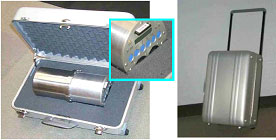 |
| 図1 DOSMAXで標準線量計として使用されているTEPC |
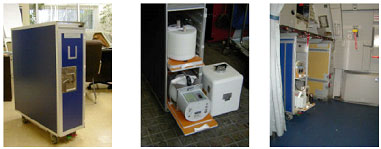 |
| 図2 スペイン・グループの計測器 |
|
| − |
|
また、ドイツ・Schraubeらが、粒子輸送コードであるFlukaを利用して、被ばく線量計算コードEPCARDの開発を行った。 |
|
| ・ |
|
米国AIRグループ
| − |
|
1997年米国・Goldhagenによって組織され、NASA(ナサ)、英国、ドイツ、カナダなどの研究者が参加。NASA(ナサ)の高高度航空機ER-2(図3)を使用して、米国西海岸で実施。ボナーボール(図4)により、熱中性子から100 までの広範囲の中性子スペクトラムを取得。[21-23] までの広範囲の中性子スペクトラムを取得。[21-23]
|
| |
|
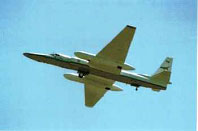 |
| 図3 NASA(ナサ) ER-2 高高度観測機 |
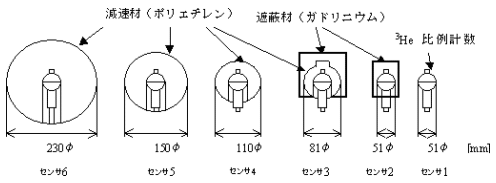 |
| 図4 ボナーボールの例(BBND) |
|
|
| ・ |
|
カナダグループ
| − |
|
1997年以降、カナダ・Lewisらによって、TEPCやバブル線量計を使用して、組織的な測定を実施。(図5、6)また、得られたデータを基に経験式による被ばく線量計算コード(PC-AIRE)を開発。[24-28]
|
| |
|
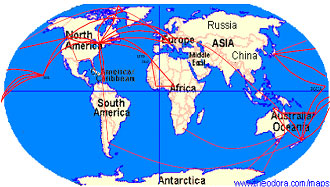 |
| 図5 カナダグループによって測定された航路[28] |
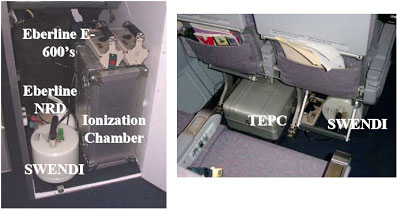 |
| 図6 カナダグループが使用した測定器[28] |
|
|
| ・ |
|
理研グループ
| − |
|
1960年から1985年までチャーター機などにより、放医研、東大核研、京大、高エネ研、原研他多数機関が参加し、NaIシンチ、電離箱、レムカウンタ、ボナーボールなどにより、宇宙線の総合的な観測を行った。(図7) それぞれの機関により、結果が報告されている。しかし、これらの多くは、宇宙線の強度変化、あるいは、宇宙線による空気シャワーの発達についての研究がほとんどであった。中性子線量についての研究もあった。(図8)[29-73] |
| − |
|
岡野は、NaIシンチによる計測を継続中。 |
| |
|
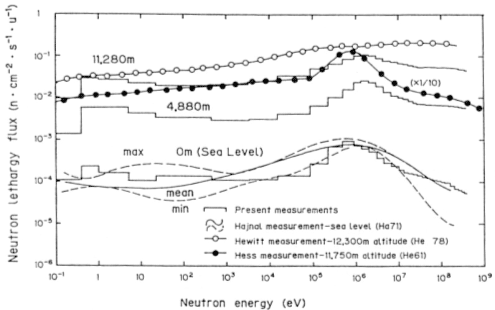 |
| 図8 Nakamuraらによる中性子スペクトラム[73] |
|
|
|
| ・ |
|
放医研グループ
| − |
|
1991年ごろから藤高、古川らにより、TLDや電子線量計で計測。[74-78] |
|
| ・ |
|
他グループ
| − |
|
日本文理大学・姫野らによるNaIシンチや3Heカウンタによる計測[79]や大分看護大学・甲斐らによる計算コードと実測値の比較[80]。 |
|
| ・ |
|
1990年代から現在まで、被ばく線量測定は組織的に実施され、非常に多くの測定データが得られ、高度、地磁気緯度、太陽活動との相関がえられた。(図9)また、それらの結果を基に、計算コード(EPCARD、PC-AIRE、Luin(Cari)、Sievertなど[17-20,26-28,81-88])が開発され、航路ごとの線量推定も容易にできるようになった。 |
| |
|
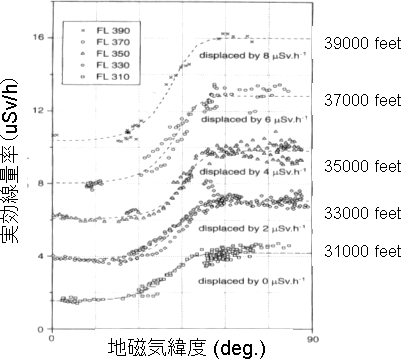 |
| 図9 地磁気緯度と高度による実行線量率の分布。電離箱とレムカンターを組み合わせて測定。[10] |
|
|
| ・ |
|
しかし、例えば、DOSMAXグループでは、“中性子と重イオンデータの不確定性を減らすために、および太陽フレアによる線量増加の知識を改善するために、さらに研究が必要”と総括。[5] |
| 測定における課題(1) 中性子エネルギースペクトラム測定 |
| ・ |
|
計測による違いが大きく[21-22,73,89-90]、100 付近のピークについては、Goldhagenらによるデータしか存在しない。(図10,11) この領域の中性子は線量に大きく貢献する( 付近のピークについては、Goldhagenらによるデータしか存在しない。(図10,11) この領域の中性子は線量に大きく貢献する( が1 が1 周辺線量当量で39%、実効線量で69%程度)。[22] 周辺線量当量で39%、実効線量で69%程度)。[22] |
| |
|
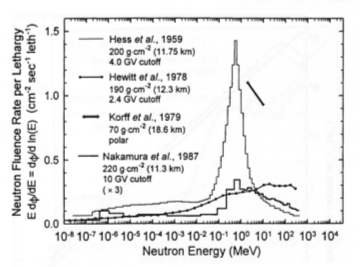 |
| 図10 Hessら、Nakamuraら、Hewittら、Kroffらによる中性子スペクトラムデータの比較。[21] |
|
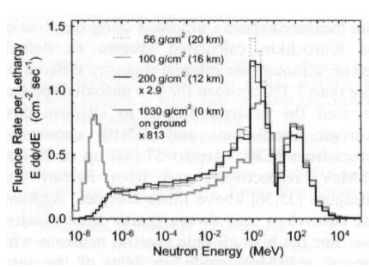 |
| 図11 Goldhagenによるボナーボールで測定した中性子スペクトラム。[22] |
|
|
| ・ |
|
 の領域では、現在適用されているフルエンスからの換算計数を使用すると周辺線量当量が実効線量を下回ってしまうことが指摘されている。[91] 高エネルギー領域の中性子のエネルギースペクトルを正確に把握する。 の領域では、現在適用されているフルエンスからの換算計数を使用すると周辺線量当量が実効線量を下回ってしまうことが指摘されている。[91] 高エネルギー領域の中性子のエネルギースペクトルを正確に把握する。 |
| ・ |
|
DOSMAX(図12)など海外の計測は、日本と欧米を結ぶ便の計測が不足。
|
| ・ |
|
理研のデータは国内便がほとんどだった。日本発の北米便や欧州便は、線量率が高い高磁気緯度地方を飛行するため総被ばく線量が高く、より正確に線量を取得しておく必要がある。
|
| |
|
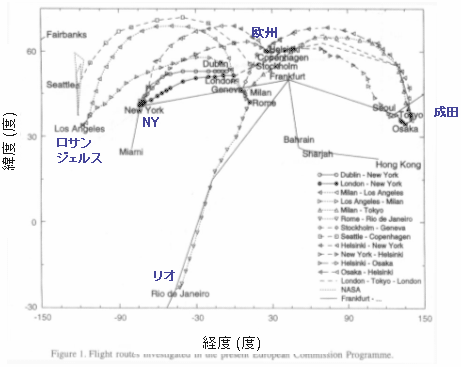 |
図12 DOSMAXによる測定
日本、韓国便も測定しているが便数は他に比べて極端に少ない。[5] |
|
| 測定における課題(3) 太陽フレアによる線量の評価 |
| ・ |
巨大な太陽フレア時に、高いエネルギーの粒子が放出され、地球に到達し、航空機高度での線量を増加させることが、非常に希であるが観測される。
|
| ・ |
これまで測定された線量の増加は2倍程度(図13)であるが、高エネルギーへの加速、太陽フレアの発生位置などの条件が重なった場合には、一事象での被ばくが数100マイクロシーベルトに達するという予測もある。[93]
|
| ・ |
その信憑性を含めて、今後の調査研究による慎重な議論が必要である。
|
| |
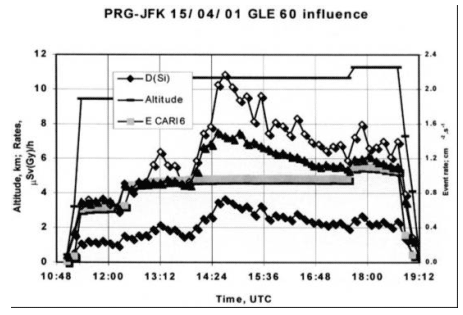 |
| 図13 2001年4月の太陽フレア時の線量率の増加。[94] |
|
|
今後の計測の意義
参考文献
| 1. |
|
D. O’Sullivan and D. Zhou, “Overview and Present Status of The European Commission Research Programme”, Radiation Protection Dosimetery 86(4) (1999) 279-283. |
| 2. |
|
L.Tommasino, “In-flight Measurements of Radiation Fields And Doses”, Rad. Prot. Dosi., 86 (1999) 297-301. |
| 3. |
|
P.Beck et al., “In-Flight Validation and Rroutine Measurements”, Rad. Prot. Dosi., 86 (1999) 303-308. |
| 4. |
|
D.O’Sullivan et al., “Investigation of Radiation Field at Aircraft Altitude”, Rad. Prot. Dosi., 92 (2000) 195-198. |
| 5. |
|
H.-G.Menzel et al., “European Measurements of Air Crew Exposure to Cosmic Radiation“, Health Physics 79 (2000) 563-567. |
| 6. |
|
D.O’Sullivan et al., “Investigation of Cosmic Rays And Their Secondaries at Aircraft Altitudes”, Rad. Meas., 34 (2001) 277-280. |
| 7. |
|
L.Lindborg et al., “The Use of TEPC for Reference Dosimetry”, Rad. Prot.Dosi., 86 (1999) 285-288. |
| 8. |
|
U.J.Schrewe et al., “Calibration Problems, Calibration Procedures and Reference Fields for Dosimetry at Flight Altitudes”, Rad. Prot. Dosi., 86 (1999) 289-295. |
| 9. |
|
U.J.Schrewe, “Radiation Exposure Monitoring in Civil Aircraft”, Nucl. Instr. and Meth., A422 (1999) 621-625. |
| 10. |
|
U.J.Schrewe, “Global Measurements of The Radiation Exposure of Civil Air Crew from 1997 to 1999”, Rad. Prot. Dosi. 91 (2000) 347-364. |
| 11. |
|
G.Curzio et al., “The Italian National Survey of Aircrew Exposure: I. Characterisation of Advanced Instrumentation”, Rad. Prot. Dosi., 93 (2001) 115-123. |
| 12. |
|
G.Curzio et al., “The Italian National Survey of Aircrew Exposure: II. On-board Measurements And Results”, Rad. Prot. Dosi., 93 (2001) 125-133. |
| 13. |
|
P. Beck et al., “FLUKA Simulation of TEPC Response to Cosmic Radiation”, http://www.itn.mces.pt/ICRS-RPS/oralpdf/Thursday13/Session25_1/rollet05.pdf. |
| 14. |
|
J.C. Saez-Vergara et al., “Radiation protection Program for aircrew members at Iberia L.A.E..”, http://www.irpa11.com/new/pdfs/5k11.pdf. |
| 15. |
|
F. Spurny, “Individual Dosimetry of Aircraft Crew ? Methods and Results in Czech Republic“, http://www.irpa11.com/new/pdfs/5k13.pdf . |
| 16. |
|
L. Tommasino et al., “The Assessment of the Aircrew Exposure throughout a complete Solar Cycle”, http://www.irpa11.com/new/pdfs/5k15.pdf. |
| 17. |
|
H.Schraube et al., “Experimental Verification And Calculation of Aviation Route Doses”, Rad. Prot. Dosi., 86 (1999) 309-315. |
| 18. |
|
S.Roesler et al., “Calculation of Radiation Fields in The Atmosphere And Comparison to Experimental Data”, Rad. Res., 149 (1998) 87-97. |
| 19. |
|
A.Ferrari et al., “Evaluation of The Influence of Aircraft Shielding on The Aircrew Exposure Through An Aircraft Mathematical Model”, Rad. Prot. Dosi., 108 (2004) 91-105. |
| 20. |
|
EPCARD, http://www.gsf.de/epcard2/index_en.phtml. |
| 21. |
|
P.Goldhagen, “Overview of Aircraft Radiation Exposure”, Health Phys., 79 (2000) 526-543. |
| 22. |
|
P.Goldhagen et al., “Measurement of the Energy Spectrum of Cosmic-ray Induced Neutron Aboard an ER-2 High-altitude Airplane.”, Nucl. Inst. Meth., A476 (2002) 42-51. |
| 23. |
|
P.A.Chee et al., “Potential Doses to Passengers and Crew of Supersonic Transports”, Health phys., 79 (2000) 547-552. |
| 24. |
|
P.Tume et al., “Characterisation of Neutron-sensitive Bubble Detectors for Application in The Measurement of Jet Aircrew Exposure to Natural Background Radiation”, Nucl. Instr. and Meth., A406 (1998) 153-168. |
| 25. |
|
B.J.Lewis et al., “Cosmic Radiation Exposure on Canadian-Based Commercial Airline Routes”, Rad. Prot. Dos. 86 (1999) 7-24. |
| 26. |
|
P.Tume et al., “Assessment of the Cosmic Radiation Exposure on Canadian-based Routes”, Health Physics, 79 (2000) 568-575. |
| 27. |
|
B.J.Lewis et al., “Aircrew Exposure from Cosmic Radiation on Commercial Airline Routes”,Rad. Prot. Dosi., 93 (2001) 293-314 |
| 28. |
|
B.J.Lewis et al., “Aircrew Dosimetery using the Predictive Code for Aircrew Radiation Exposure (PCAIRE)”, http://www.itn.mces.pt/ICRS-RPS/oralpdf/Thursday13/Session25_1/Bennett04.pdf |
| 29. |
|
岡野眞治. 村上一昭, “航空機高度における放射線測定”,Isotope News, 8 (1975) 2-5. |
| 30. |
|
和田雅美 他, “1979年理研航空機実験”, 理研報告, 56 (1980) 15-30. |
| 31. |
|
M.Okano et al, “Measurement of Environmental Radiations with a Scintillation Spectrometer Equipped with a Spherical NaI(Tl) Scintillator”, Natural Rad. Env.III (1980) 896-911. |
| 32. |
|
和田雅美 他, “1981年理研航空機実験”, 理研報告, 59 (1983) 1-19. |
| 33. |
|
M.Okano and M.Wada, “Forbush Decrease of July 1982 Observed on Board A Jet Plane”, ICRC, MG3 (1983) 233-235. |
| 34. |
|
M.Okano et al., “Measurement of Environmental Radiations with A Scintillation Spectrometer Equipped with Spherical Scintillators of Several Kinds”, Rad. Prot. Dosi,24 (1988) 301-305. |
| 35. |
|
今井喬 他, "空気シャワーの高度変化について(I)", 宇宙線研究, 6 (1961) 1. |
| 36. |
|
鎌田甲一, 荻田直史, "空気シャワーの高度変化の計算", 宇宙線研究, 6 (1961) 13. |
| 37. |
|
T. Imai et al., "The Altitude Variation of Air Showers", Sci. PapersI.P.C.R., 55 (1961) 42. |
| 38. |
|
T. Imai et al., "F.M. Chamber Applied to Zenith Angle Detection of Air Shower Particles", Sci. PapersI.P.C.R., 55 (1961) 49. |
| 39. |
|
K. Kamata, "Zenith Angle Distribution of Extensive Air Showers at 8500 m above Sea Level", Sci. PapersI.P.C.R., 55 (1961) 130. |
| 40. |
|
今井喬 他, "トランジスタ化空気シャワー測定装置", 理研報告, 37 (1961) 73. |
| 41. |
|
T. Imai et al., "On the Altitude Variation of Extensive Air Showers in the Upper Half of the Atmosphere", J. Phys. Soc. Japan,17 (1962) S221. |
| 42. |
|
宮崎友喜雄 他, "宇宙線強度の汎世界分布(第1報)太平洋および印度洋における予備測定", 理研報告, 38 (1962) 497. |
| 43. |
|
竹内一, 今井喬, "6000 における宇宙線全成分の方向分布に関する実験", 理研宇宙線研究室報告, 7 (1963) 21. における宇宙線全成分の方向分布に関する実験", 理研宇宙線研究室報告, 7 (1963) 21. |
| 44. |
|
K. Kamata et al., "The Altitude Variation of AirShowers", Proc. Int. Conf. Cosmic Rays,4 (1963) 214. |
| 45. |
|
K. Kamata et al., "Air Showers at High Altitude", Proc. Int. Conf. Cosmic Rays,2 (1965) 742. |
| 46. |
|
竹内一, "大気中の宇宙線高度変化", 東大宇宙航空研報告, 2 (1966) 1262. |
| 47. |
|
須田英博, 小玉正弘, "宇宙線強度の汎世界分布(第2報)World Survey用中性子モニターの製作", 理研報告, 43 (1967) 33. |
| 48. |
|
小玉正弘, 須田英博, "宇宙線強度汎世界分布(第3報)高度変化および緯度変化について", 理研報告, 43 (1967) 39. |
| 49. |
|
T. Doke et al., "High Sensitivity Scintillation Spectrometer for Background Neutrons", Nucl. Instr. Meth., 48 (1967) 245. |
| 50. |
|
E. Tajima et al., "Spectrum of Cosmic Ray Produced Neutrons", J. Phys. Soc. Japan,22 (1967) 22. |
| 51. |
|
K. Murakami et al., "Observation of EAS at Airplane Altitudes", Canad. J. Phys., 46 (1968) S272. |
| 52. |
|
丹生潔 他, "飛行機高度におけるエマルジョンチェンバーによるジェット現象の研究(I)", 宇宙線研究, 13 (1968) 20. |
| 53. |
|
村上一昭 他, "飛行機上でのASのDetection", 宇宙線研究, 14 (1968) 20. |
| 54. |
|
S. Kawasaki, M. Wada, "Measurements of Altitude and Latitude Variations of Neutron Intensity by a Large BF3 Counter Aboard an Aircraft", Sci. PapersI.P.C.R., 68 (1973) 31. |
| 55. |
|
和田雅美 他, "宇宙線中性子の航空機、船上観測", 理研シンポジウム講演集"惑星空間プラズマ磁場と宇宙線", (1975) 159. |
| 56. |
|
熊谷秀和 他, "簡易型データレコーダと放射線計測における応用", 理研報告 51 (1975) 119. |
| 57. |
|
岡野真治, 村上一昭, "航空機高度における放射線測定",Isotope News, 254 (1975) 2. |
| 58. |
|
岡野真治, "各種放射線測定器の宇宙線検出像", 理研シンポジウム講演集"航空機による宇宙線観測II", (1976) 3. |
| 59. |
|
山本敬三 他, "高圧電離箱の諸特性と宇宙線測定への適用", 理研シンポジウム講演集"航空機による宇宙線観測II", (1976) 12. |
| 60. |
|
熊谷秀和, "航空機内におけるデータ収集法", 理研シンポジウム講演集"航空機による宇宙線観測II", (1976) 17. |
| 61. |
|
奥谷晶子, "宇宙線全成分強度の高度、緯度変化", 理研シンポジウム講演集"航空機による宇宙線観測II", (1976) 21. |
| 62. |
|
川崎信吉 他, "ヘリコプタによる宇宙線中性子の測定", 理研シンポジウム講演集"航空機による宇宙線観測II", (1976) 31. |
| 63. |
|
高橋一喜 他, "航空機高度での空気シャワー", 理研シンポジウム講演集"航空機による宇宙線観測II", (1976) 38. |
| 64. |
|
丹生潔, "超高エネルギージェットシャワーと新素粒子の観測", 理研シンポジウム講演集"航空機による宇宙線観測II", (1976) 46. |
| 65. |
|
高橋一喜 他, "航空機搭載用宇宙線空気シャワー観測装置", 理研報告, 52 (1976) 139. |
| 66. |
|
岡野真治 他, "環境放射線宇宙線成分の絶対量の測定", 東大宇宙航空研昭和51年度大気球シンポジウム報告, (1976) 19. |
| 67. |
|
岡野真治 他, "環境放射線測定-大気中における宇宙線成分の高度変化", 東大宇宙航空研報告, 14 (1978) 1019. |
| 68. |
|
岡野真治, "宇宙線強度の高度変化", 理研シンポジウム講演集"宇宙線粒子の大気中での伝播", 54 (1979) 9. |
| 69. |
|
竹内一, "軟成分の高度変化についてのコメント", 理研シンポジウム講演集"宇宙線粒子の大気中での伝播", 54 (1979) 21. |
| 70. |
|
高橋一喜, "理研フライトによる実験計画", 理研シンポジウム講演集"宇宙線粒子の大気中での伝播", 54 (1979) 54. |
| 71. |
|
K. Takahashi, "Altitude Variations of Various Cosmic-Ray Components Observed by Airbone Detectors at a Middle Latitude Region", Int. Cosmic Ray Conf., 4 (1979) 342. |
| 72. |
|
M. Kodama, S. Kawasaki, T. Imai, K. Takahashi, M. Wada, "Anomalous Atmospheric Attenuation of Cosmic-Ray-Produced Neutrons near the Earth's Surface", Natural Rad. Envir., III, 57 (1980). |
| 73. |
|
T.Nakamura et al., “Altitude Variation of Cosmic-ray Neutrons”, Health Phys., 53 (1987) 509-517. |
| 74. |
|
藤高和信, “航空機搭乗中の宇宙線被曝”, 保健物理 31 (1996) 463-471. |
| 75. |
|
古川雅英, “民間航空機における宇宙線線量のポケット線量計による測定:日本国内線の結果”,Radioisotopes, 49 (2000) 152-158. |
| 76. |
|
古川雅英, “民間航空機における宇宙線線量のポケット線量計による測定(II):国際線の結果”,Radioisotopes, 50 (2000) 282-288. |
| 77. |
|
H.Yasuda and K.Fujitaka, “Cosmic Radiation Protection Dosimetery Using the Electronic Personal Dosemeter (EPD) in Selectec International Flights”, J. Rad. Res., 42(2001) 57-68. |
| 78. |
|
Y.Uchihori et al., “Radiation Measurements aboard NASA ER-2 High Altitude Aircraft with the Liulin-4J Portable Spectrometer”, Adv. Space Res., 32 (2003) 41-46. |
| 79. |
|
S.Himeno et al., “Measurements of Electromagnetic Noise and Cosmic Radiation Doses in an Aircraft”, Radioisotopes, 49 (2000) 479-486. |
| 80. |
|
甲斐 et al.,“Cosmic Radiation Doses to Commercial Aircrew Members in Japan”, 保健物理 27 (1992) 289-294. |
| 81. |
|
PCAIRE, http://www.pcaire.com/main.htm . |
| 82. |
|
K.O’Brien, “Luin, A Code for the Calculation of Cosmic Ray Propagation in the Atmosphere”, EML-338 (1978) 1-20. |
| 83. |
|
K.O’Brien et al., “Atmospheric Cosmic Rays And Solar Energetic Particles at Aircraft Altitude”, Envir. Inster., 22 (1996) S9-S44. |
| 84. |
|
K.O’Brien and J.E.McLaughlin, “The Radiation Dose to Man from Galactic Cosmic Rays”, Health Phys., 22 (1972) 225-232. |
| 85. |
|
K.O’Brien, “Cosmic-Ray Propagation in the Atmosphere”, Nuov. Cim., 3A (1971) 521-547. |
| 86. |
|
W.Friedberg et al., “Radiation Exposure during Air Travel: Guidance Provided by the Federal Aviation Administration for Air Carrier Crews”, Health Phys., 79 (2000) 591-595. |
| 87. |
|
CARI-6, http://www.cami.jccbi.gov/AAM-600/radiation/600radio.html . |
| 88. |
|
Sievert, http://www.sievert-system.org/WebMasters/en/index.html . |
| 89. |
|
J.E.Hewitt et al.,“Ames Collaborative Study of Cosmic Ray Neutrons: Mid-Latitude Flights”, Health Phys., 34 (1978) 375-384. |
| 90. |
|
T.W.Armstrong et al., “Calculations of Neutron Flux Spectra Induced in the Earth’s Atmosphere by Galactic Cosmic Rays”, J. Geo. Res., 78 (1973) 2715-2726. |
| 91. |
|
M. Pelliccioni, “The impact of ICRP Publication 92 on the conversion coefficients in use for cosmic ray dosimetry”, Rad. Prot. Dosi., 109 (2004) 303-309. |
| 92. |
|
H. Schraube et al., “Neutron spectra at flight altitudes and their radiological estimation”, Adv. Space Res., 21 (1998) 1727-1738. |
| 93. |
|
P. Lantos and N. Fuller, “Solar Radiation Doses On-Board Aeroplanes”, Rad. Prot. Dosi., 104 (2003) 199-210. |
| 94. |
|
F. Spurny and Ts. Dachev, “Measurements in an aircraft during an intense solar flare, Ground Level Event 60, on April15, 2001”,Rad. Prot. Dosi., 95(2001) 273-275. |
| 95. |
|
M. Takada et al., “Characteristics of a Phoswich detector to measure neutron spectrum in a mixed field of neutrons and charged particles”, Nucl. Inst. Meth., A476 (2002) 332-336. |
| 96. |
|
M. Takada et al., “Progress report on the Phoswich neutron detector to measure high-energetic neutron spectra onboard an aircraft and a space craft”, J. Nucl. Sci. Tech., S4 (2004) 399-402. |
| 97. |
|
M. Takada et al., “High energy neutron spectrometer onboard aircraft and spacecraft”, Proc. of 11th International Congress on Radiation Protection(IRPA11), 3h70 (2004). |
| 98. |
|
Ts. Dachev et al., “Calibration results obtained with Liulin-4 type dosimeters”, Adv. Space Res., 30 (2002) 917-925. |
| 99. |
|
Y. Uchihori et al., “Analysis of the calibration results obtained with Liulin-4J spectrometer-dosimeter on protons and heavy ions”, Rad. Meas., 35 (2002) 127-134. |
|
 |